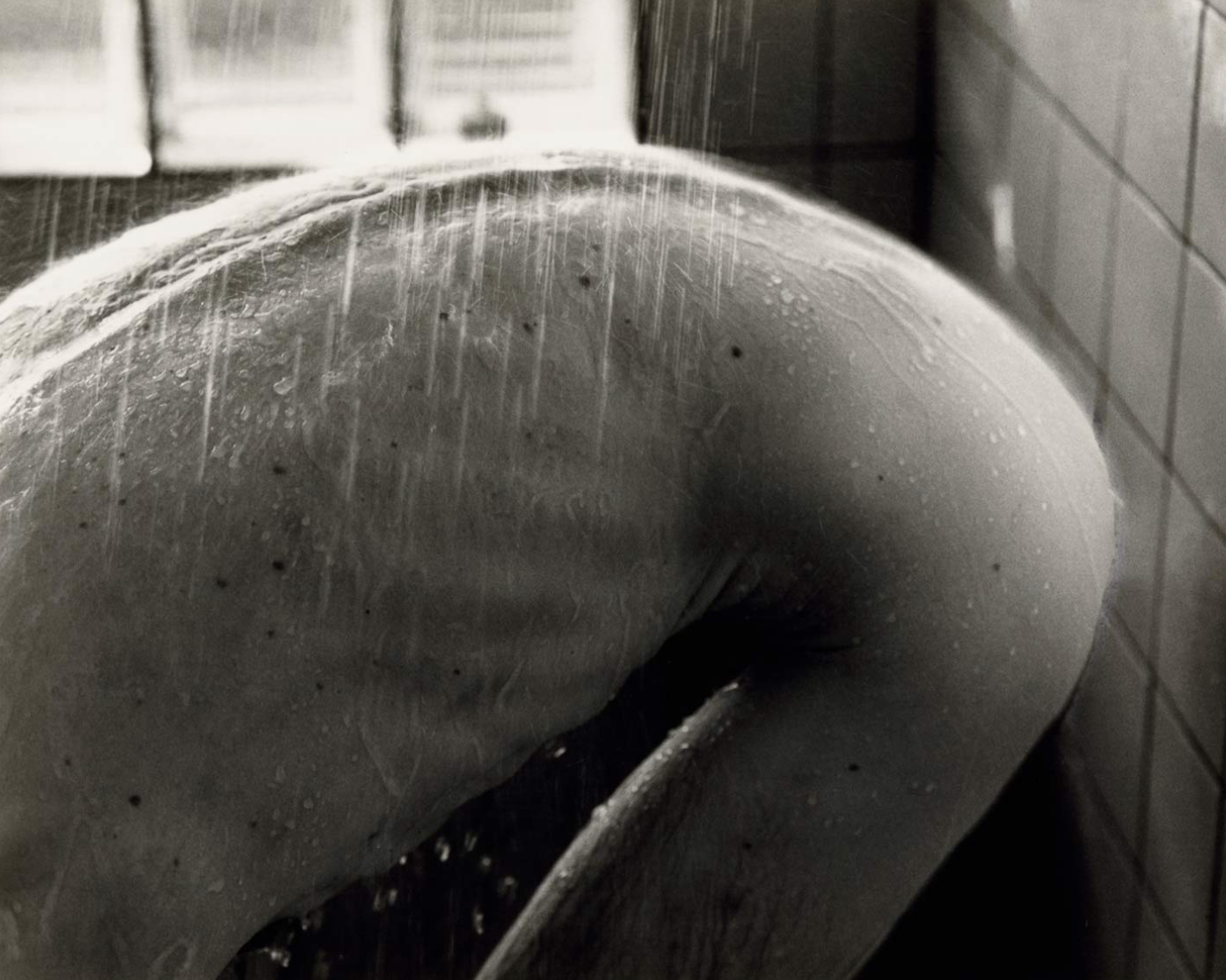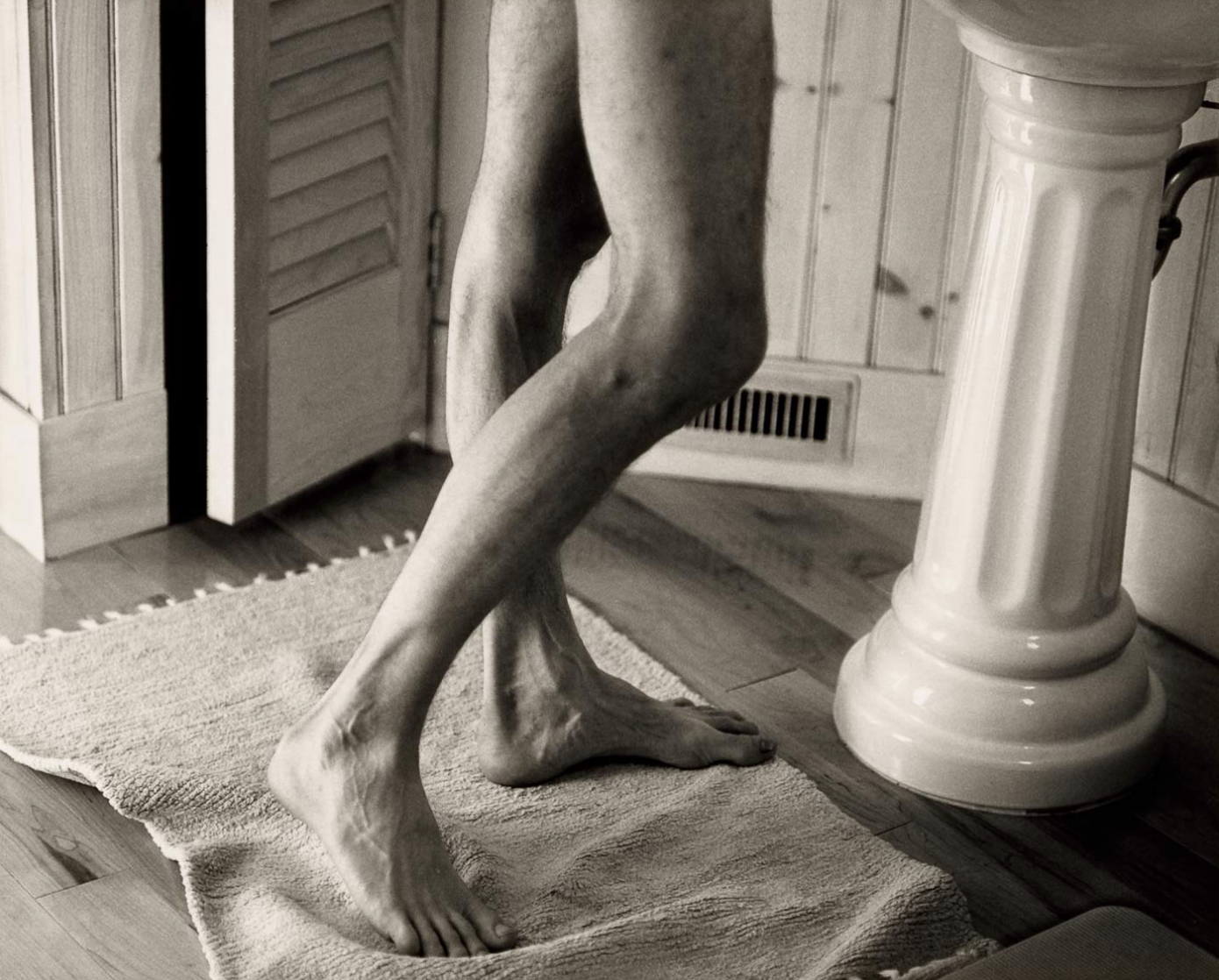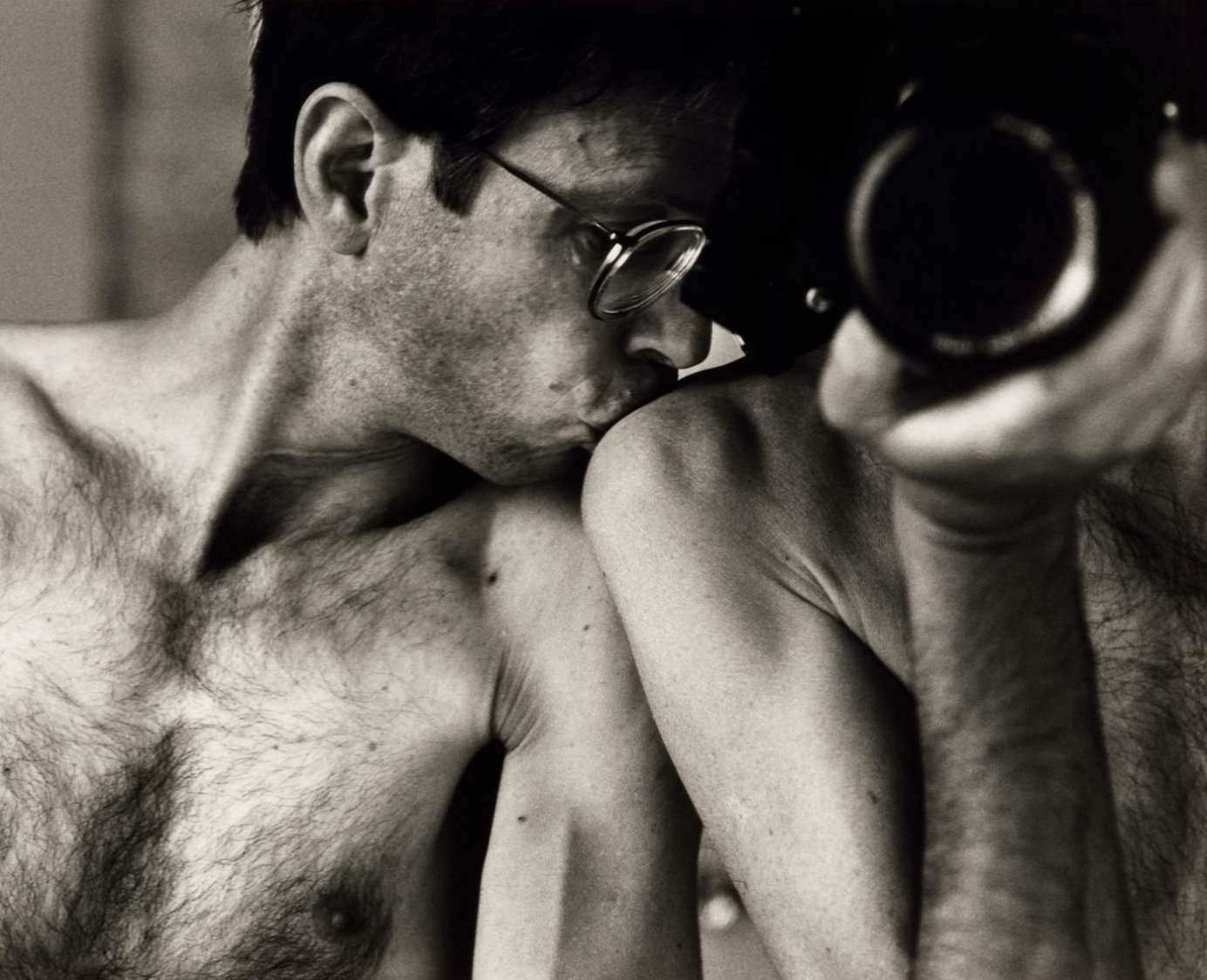Rx 42 / Morning Ritual
Over the years of HIV and AIDS, caring for ourselves and each other, I had noticed that these preparations for the day had become a poignant and focused time for us. — David Lebe, May 10, 1996
In the mid-nineties, photographer David Lebe and his partner Jack Potter left Philadelphia for upstate New York. With no effective AIDS treatments available, the couple sought personal refuge and pastoral tranquility, caring for one another on what Lebe described as their “last adventure.” Lebe produced the Morning Ritual series over the course of 1994 when, as Philadelphia Museum of Art curator Peter Barberie wrote, “Jack came very close to dying, and David also declined, but amazingly they rallied with new drug combinations that became available after 1995.”
They spent their days quietly—resting, reading, and gardening. Morning Ritual emerged from such small, private moments. This intimate portrait of an emaciated Potter injecting a homeopathic treatment seems to represent an attempt to assert control over his health, even if by placebo. “In this photograph Jack is injecting himself, as he did each morning, with a homeopathic wacko substance we had little faith in,” said Lebe, “because it felt better to be doing something than nothing.” While their move to the countryside was initiated by a kind of desperation and darkness (in Philadelphia, “one couldn’t go anywhere without passing the doorways or seeing the apartment windows of the sick or dying, or coming upon the places of friends already gone,” wrote Lebe), the series Morning Ritual is inspired by and infused with light. As they wash, shave, and embrace, Jack and David are bathed in the gentle quietude of early morning.
In 1996, with a newfound hope for their future in the form of effective treatment, Lebe began making prints of the negatives he’d produced two years prior. “To get what I wanted,” wrote Lebe, “I found I needed to make several unique and intricate burning and dodging tools for each negative. Each print involved numerous steps and it became necessary to create a special notation form to keep track of how each image was printed just to be able to go back and make adjustments a day or two later.” The artistic process itself became a kind of ritual, and the resulting series a documentation of a time when the photographer thought there was no future: “It was during this time together, suspended from the world, that I made these photographs.” Now in their seventies, David and Jack continue to reside in upstate New York.
reflections…
Small gestures and fleeting moments, as captured by Lebe—feet on a bath mat, water droplets on bare skin—are lovingly elevated in Morning Ritual. The series emerges as a testament to the stabilizing nature of routine amid uncertainty, and to time spent together without the urgencies of a future to attend to. A sense of impending loss and grief is intertwined with tenderness; ritual persists as recourse and remedy. Lebe recalled, “Somehow though, those were not unhappy times and felt less anxious than the present.”
How can desperation be clarifying, even liberating, and permit us to derive meaning from mundane, repetitive actions that over time, may come to define the rhythm of our lives? In what ways might routines and rituals assert agency for those suffering from chronic illness and/or incurable conditions? Conversely, how can habitual patterns be destructive or belie underlying angst and fear? Many people felt a similar gratitude mixed with sadness or anxiety, even nostalgia, when pandemic restrictions were lifted. Can the routines cultivated during the COVID-19 pandemic continue to be meaningful in the years to come? How might they help us live with chaos, cope with suffering, and forge continuity between the past, present, and future?
Art historian Michael Stone Richards wrote, “The collapse of social compacts and values has produced an equally radical awareness of mutual interconnected-ness with environments, nature, and people. Care is the name for this exposure.” Stigmatized and medically abandoned by societal and government indifference, Lebe and Potter were left to the mutual care of the other. Although the clinical encounter tends not to be reciprocal in this way, the physician-patient relationship is similarly characterized by vulnerability, trust, and a commitment to not abandon those in need of care. Just as Lebe and Potter turned to the other, when and how does mutuality occur in both informal and formal caregiving paradigms? How does Morning Ritual foreground the value of reciprocal exchanges, interconnectedness, and emotional support in the caregiving relationship?
sources
Barberie, Peter. Long Light: Photographs by David Lebe. Philadelphia Museum of Art; 2019.
Biehl, João, Kristen Ghodsee, and Lisa Stevenson. On listening as a form of care. Slought Books; 2020.
Lebe, David. “A Different Time.” David Lebe. https://davidlebe.com/MORNING-RITUAL/About-Morning-Ritual:-A-Different-Time/1/caption.
Email communication with artist. May 2021.








